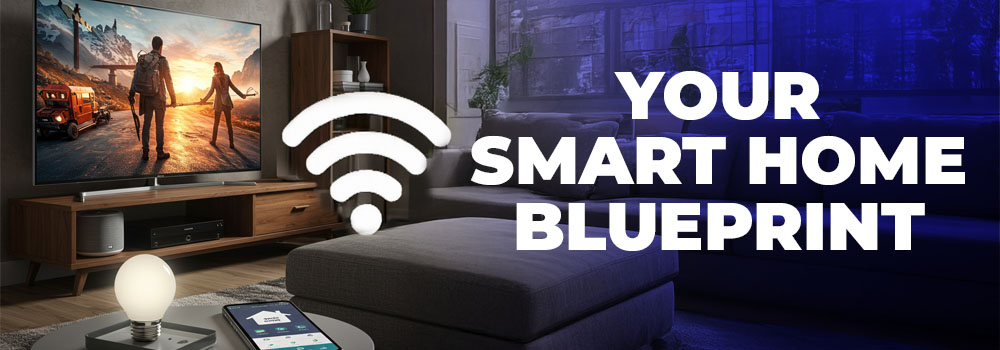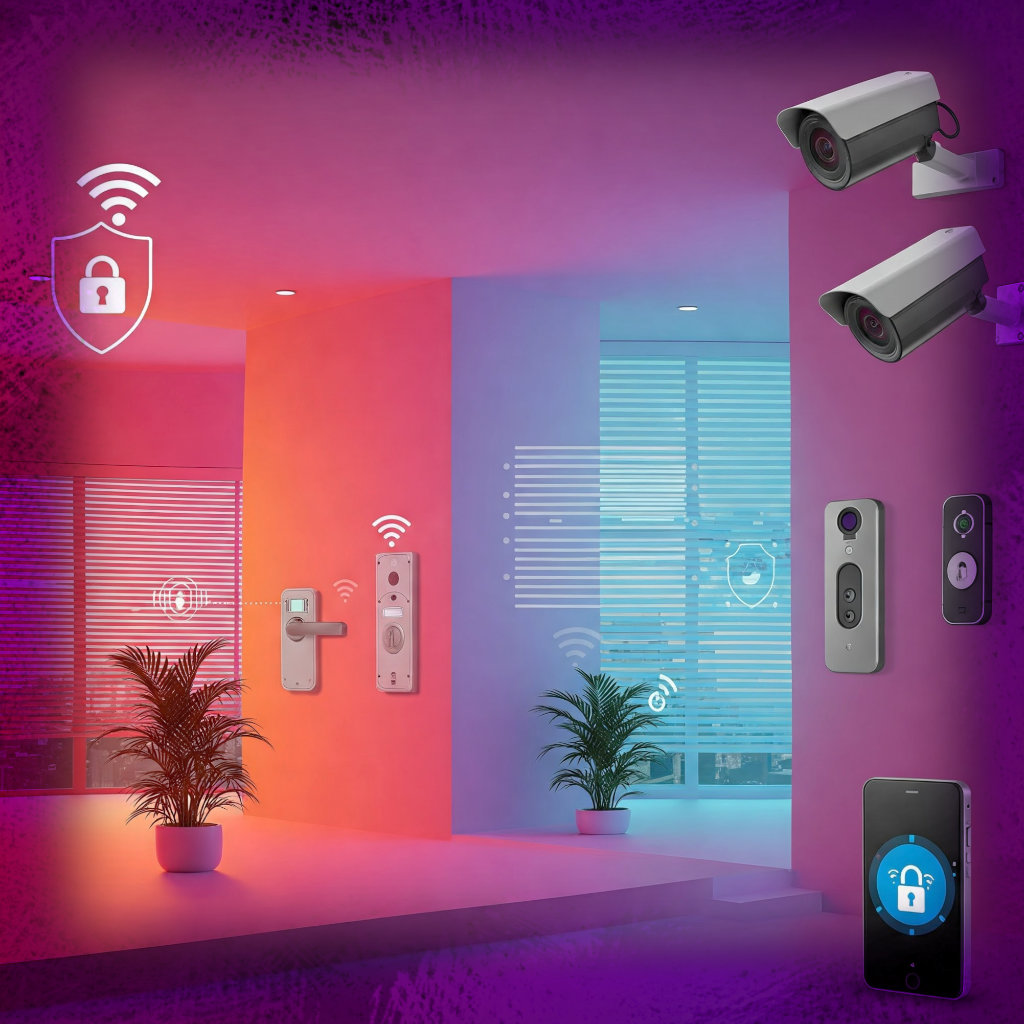The Growing Importance of Smart Home Security
As smart home adoption surges, so do cybersecurity threats. Modern households now average 20+ connected devices—each representing a potential entry point for malicious actors. Proper security measures have transitioned from optional to essential in our hyper-connected living spaces.
Why Your Connected Devices Need Protection
Smart devices often lack robust built-in security, making them low-hanging fruit for hackers. Compromised devices can lead to data theft, home surveillance hijacking, or even physical security breaches. Proactive protection safeguards both your digital privacy and physical safety.
Section 1: Understanding Smart Home Vulnerabilities
Common Security Risks in Smart Homes
Many IoT devices ship with factory-default passwords, unencrypted communications, and outdated software architectures. These vulnerabilities create perfect storm conditions for credential stuffing attacks, man-in-the-middle interceptions, and botnet conscription.
How Hackers Exploit IoT Devices
Cybercriminals employ sophisticated tactics like DNS rebinding attacks to bypass network protections, or use compromised devices as pivot points to access more sensitive systems. Baby monitors and security cameras remain particularly vulnerable to live streaming exploits.
The Consequences of Poor Smart Home Security
Beyond privacy violations, insecure devices can enable:
- Ransomware attacks locking home systems
- Physical break-ins via hacked smart locks
- Electricity theft through compromised meters
- Distributed denial-of-service (DDoS) participation
Real-World Examples of Smart Home Breaches
The 2016 Mirai botnet attack harnessed 600,000 insecure IoT devices to cripple major internet infrastructure. More recently, researchers demonstrated how hacked smart refrigerators could intercept Gmail login credentials.
Section 2: Securing Your Smart Home Network
The Role of Your Router in Device Security
Your router serves as the first line of defense. Enable WPA3 encryption, disable WPS, and change the default admin password. Advanced users should consider flashing open-source firmware like DD-WRT for enhanced security controls.
Setting Up a Guest Network for IoT Devices
Isolate smart devices on a separate VLAN or guest network. This containment strategy prevents lateral movement if a device becomes compromised, protecting computers and smartphones on your primary network.
Why You Should Change Default Credentials
Shockingly, 15% of smart home devices still use default admin/password combinations. Create unique, complex passwords for each device and consider using a password manager to maintain them securely.
The Importance of Network Segmentation
Divide your network into security zones:
- Trusted (personal devices)
- IoT (smart home devices)
- Guest (visitor access)
This architecture limits potential attack surfaces and contains breaches.
Section 3: Device-Specific Security Measures
Smart Speaker Security: What You Need to Know
Voice-activated assistants require particular vigilance. Disable always-listening modes when not needed and regularly review voice recording histories. Enable speaker authentication features that recognize only authorized voices. For sensitive conversations, utilize physical mute switches rather than software controls.
Protecting Smart Cameras from Unauthorized Access
Security cameras demand multiple protection layers:
- Change default admin credentials immediately
- Enable end-to-end encryption where available
- Disable UPnP (Universal Plug and Play) to prevent automatic port forwarding
- Set motion detection zones to avoid capturing public spaces
- Cover lenses when not in active use
Securing Smart Locks and Entry Systems
Digital locks require military-grade security protocols:
- Implement temporary access codes for guests
- Disable Bluetooth when away for extended periods
- Pair with door sensors that alert to forced entry attempts
- Choose models with physical override protection
- Audit access logs weekly for unauthorized entries
Best Practices for Smart Thermostats and Appliances
Energy devices need special attention:
- Disable remote access when on vacation
- Set geofencing to prevent operation outside your area
- Separate HVAC controls onto their own network segment
- Replace default temperature ranges with customized schedules
- Monitor for unusual energy consumption patterns
Section 4: Advanced Protection Strategies
Implementing Two-Factor Authentication (2FA)
Where available, always activate 2FA using:
- Authenticator apps rather than SMS
- Physical security keys for critical systems
- Biometric verification as secondary factors
- Backup code storage in encrypted formats
The Benefits of a VPN for Smart Homes
A properly configured VPN provides:
- Encrypted tunnels for remote access
- Masking of device IP addresses
- Protection against ISP data collection
- Geo-spoofing for region-locked features
- Additional layer against DDoS attacks
Using Firewalls to Shield Connected Devices
Next-gen firewall solutions offer:
- Deep packet inspection for IoT traffic
- Behavior-based anomaly detection
- Automatic quarantine of suspicious devices
- Custom rules for each device category
- Regular threat intelligence updates
Regular Firmware Updates: A Critical Defense
Establish an update protocol:
- Enable automatic updates where trustworthy
- Manually verify checksums before installation
- Maintain an update calendar for all devices
- Test updates on non-critical devices first
- Keep backup firmware versions available
Section 5: Privacy Considerations
Managing Data Collection from Smart Devices
Take control of your data footprint:
- Opt out of “improvement programs”
- Disable unnecessary data sharing
- Request data deletion periodically
- Review privacy policies annually
- Use local storage instead of cloud where possible
Understanding Device Permissions and Access
Conduct quarterly permission audits:
- Revoke unused third-party connections
- Limit app permissions to essentials only
- Disable remote access when unnecessary
- Create separate user accounts per family member
- Implement role-based access controls
How to Limit Third-Party Data Sharing
Combat the hidden data economy:
- Disable personalized ad tracking
- Opt out of data brokerage programs
- Use network-level ad blockers
- Choose devices with local processing
- Monitor outbound traffic patterns
The Risks of Voice Assistant Recordings
Minimize voice data exposure:
- Automate regular recording deletions
- Disable voice profile learning
- Use offline voice recognition when available
- Review cloud-stored transcripts monthly
- Cover microphones during sensitive discussions
Section 6: Long-Term Security Maintenance
Creating a Device Inventory and Security Checklist
Develop a living document tracking:
- All connected devices with IP/MAC addresses
- Current firmware versions
- Last password change dates
- Configured security features
- Scheduled maintenance tasks
How to Monitor for Suspicious Activity
Implement active monitoring:
- Network intrusion detection systems
- Anomaly-based behavior alerts
- Regular log reviews
- Traffic pattern analysis
- Automated threat intelligence feeds
When to Replace Outdated Smart Devices
Establish replacement criteria:
- End-of-life status from manufacturer
- Unpatchable vulnerabilities
- Insecure communication protocols
- Lack of current security standards
- Repeated unexplained behavior
Educating Household Members About Security
Conduct regular security briefings:
- Phishing attempt recognition
- Proper password hygiene
- Safe app installation practices
- Physical device security
- Emergency response protocols
Section 7: Emerging Threats and Future-Proofing
The Rise of AI-Powered Cyberattacks
Prepare for next-gen threats:
- AI-generated social engineering
- Adaptive malware
- Behavioral spoofing
- Automated vulnerability scanning
- Intelligent brute force attacks
Preparing for Quantum Computing Threats
Future-proof your systems:
- Adopt quantum-resistant algorithms
- Implement lattice-based cryptography
- Upgrade to post-quantum VPNs
- Monitor NIST standardization progress
- Plan for cryptographic agility
Next-Generation Smart Home Security Solutions
Stay ahead with:
- Blockchain-based device authentication
- Zero-trust network architectures
- Hardware security modules
- Behavioral biometrics
- Autonomous threat hunting systems
Conclusion: Building a Culture of Smart Home Security Awareness
True smart home security requires ongoing vigilance. By implementing these layered defenses—from basic hygiene to advanced protections—you create a resilient ecosystem that evolves with the threat landscape. Remember that security isn’t a product but a process, demanding regular attention and adaptation.
The most secure smart homes blend technology with awareness. They leverage cutting-edge tools while maintaining healthy skepticism about device capabilities. They balance convenience with caution, understanding that true smart living means being in control—not just connected.
As you continue expanding your smart home, let security be the foundation of every addition. Choose devices that respect your privacy, configure them with protection in mind, and maintain them with disciplined care. In doing so, you’ll create not just a connected home, but a safe and trustworthy one.

